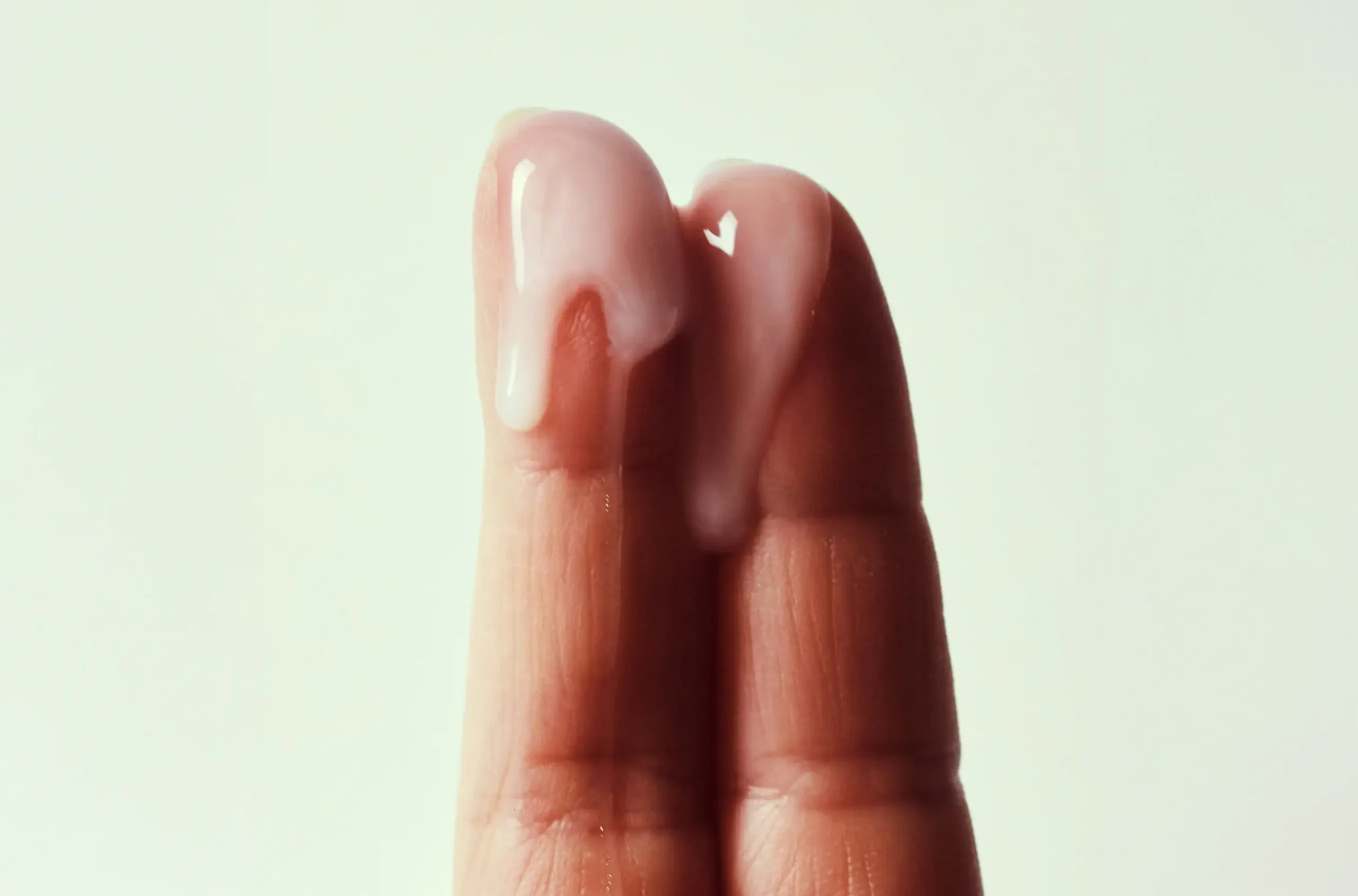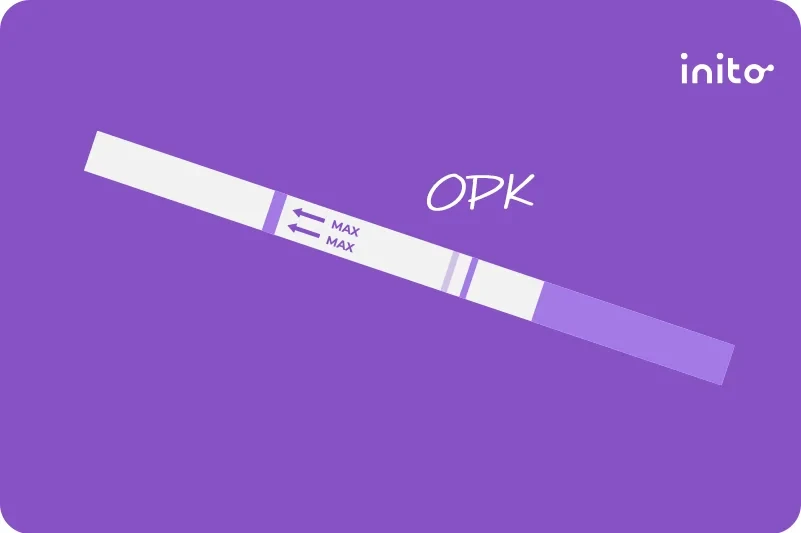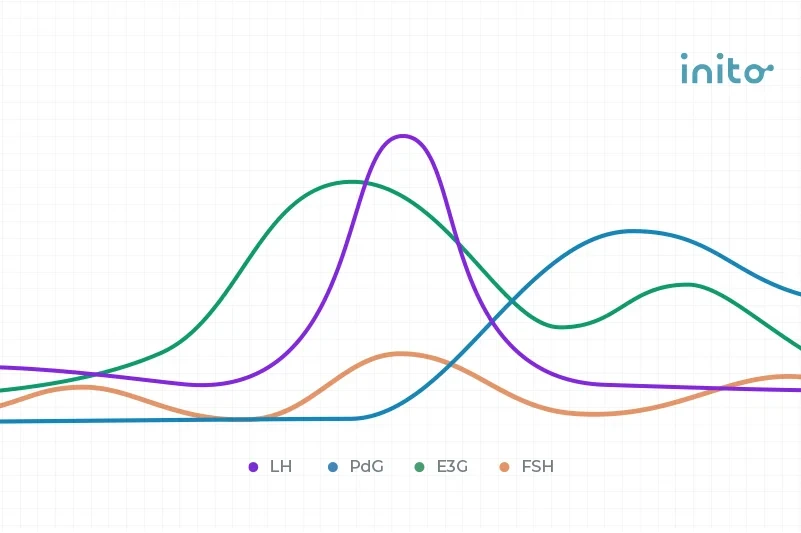Content table
Dealing with endometriosis can sometimes feel like an uphill battle, but know that you’re not alone in this journey.
Endometriosis affects about 10% of women. And many are looking for answers about the confusing symptoms this condition causes. One area that often raises questions is vaginal discharge.
So what’s the deal with endometriosis and discharge? Can endometriosis really cause your vaginal discharge to change? Let’s dive in.
Key takeaways
- Endometriosis can indirectly affect your vaginal discharge. This is mainly due to hormonal changes (high estrogen) and an increased risk of infection.
- Discharge changes can include spotting (pink, brown, or black), heavier flow, and signs of infection such as yellow/green discharge, foul smell, and lumpy consistency.
- Other endo symptoms to watch for include pelvic pain, painful menstrual periods, pain during sex, and infertility.
- See your doctor if you notice any discharge changes, burning during urination, fever, itching, or experience pain during sex.
Is there a relationship between endometriosis and vaginal discharge?
Endometriosis is a condition in which the tissue similar to the inner uterine lining (endometrial tissue) grows outside the uterus.
This “misplaced” tissue can lead to many different symptoms. And yes, changes in vaginal discharge can be one of them.
Here’s a closer look at how endometriosis can influence vaginal discharge.
Menstrual changes
Endometriosis often causes irregular periods. These irregularities can definitely affect the color of your discharge. You might see spotting between menstrual periods, which can be pink in color. You may also experience brown or black discharge.
Know more: Why Does My Period Date Change Every Month?
Excess estrogen
Endometriosis is usually characterized by a high-estrogen environment. This is because the endometrial tissue, even outside the uterus, responds to estrogen. It can even produce some of its own!
Increased estrogen levels can stimulate the glands in your cervix. As a result, these glands may produce more fluid.
Think of it like this: The more estrogen, the more “fuel” for those glands to produce discharge.
Know more: What Causes High Estrogen Levels?
Infections
Research suggests that endometriosis is linked to a higher risk of vaginal and upper genital tract infections as well as lower genital tract infections. This includes pelvic inflammatory disease (PID).
This increased risk could be due to several factors including:
- Changes in immune response: Endometriosis may alter the immune system in the pelvic region. This can make it easier for bacteria to take hold and cause infections.
- Chronic pain and altered pelvic environment: Endo can cause inflammation and changes in the pelvic environment. This can cause scar tissue to get formed (aka fibrosis). And the disruption of the normal balance of bacteria in the vagina makes infections more likely.
Know more: If I Get a UTI, Will It Delay My Period?
- Medical treatments: Some treatments for endo, such as progestins, can affect the vaginal flora and increase the risk of infections.
- Infertility: Endo-related infertility can lead to more invasive procedures and treatments, which can increase the risk of infections.
- Menorrhagia: Heavy menstrual bleeding can create a more hospitable environment for bacterial growth.
- Pregnancy disorders: Endo is associated with an increased risk of pregnancy complications. And some of these may increase the risk of infections.
These infections can lead to changes in vaginal discharge, including:
- Yellow or green color
- Foul smell
- Lumpy or cottage cheese-like consistency
What types of discharge are seen in endometriosis?
Let’s break down the endo’s discharge changes in more detail.
Spotting
This is a common symptom of endometriosis. It’s due to the misplaced endometriosis tissue shedding and the irregular periods.
Spotting can look:
- Pinkish: Pink discharge usually signals that there’s fresh blood mixed with cervical mucus. This could be due to irregular bleeding or even ovarian cysts.
- Brownish or blackish: These colors mean oxidized blood or tissue that’s been trapped or isn’t able to shed properly.
Infection-related discharge
If you have an infection related to endo, your discharge might be yellow or green. It could also have a foul smell or be lumpy or cottage cheese-like.
Understanding your menstrual cycle and identifying potential signs of irregular discharge and infection is key when it comes to endo.
A fertility monitor like Inito can help you track and confirm ovulation. It paired with the Inito app where you can log any unusual discharge or symptoms of endometriosis. This helps you track and be more aware of changes that might warrant a visit to the doctor.
What are the other symptoms of endometriosis?
Vaginal discharge changes are just one piece of the endo puzzle. Here are some other common signs and symptoms of endometriosis.
Pain
Endometriosis pain is pretty much a universal experience. This can include:
- Pelvic pain: A deep, aching pain in the pelvis.
- Abdominal pain: This can range from mild cramps to severe pain.
- Back pain: Endo can also cause pain in your lower back.
- Painful periods: Up to 29% of women with painful periods (dysmenorrhea) may have endo.
- Pain during sex: This condition can make sex painful.
- Pain with bowel movements or urination: You might feel pain when using the toilet, especially during your menstrual period.
Bleeding issues
Endo can cause:
- Heavy menstrual bleeding: Your periods might be much heavier than normal.
- Irregular bleeding: Your periods might come at unpredictable times.
- Bleeding between periods: You might experience spotting or bleeding between menstrual periods.
Other symptoms
This condition can also lead to:
- Fatigue
- UTI-like symptoms
- Bloating
- Weight gain
- Infertility
When do you need to see a doctor about endo discharge?
Pay attention to your body. If you notice any of the following, visit a healthcare professional:
- Changes in discharge: If your discharge changes color, smell, or consistency, it’s time to get it checked out.
- Other symptoms: If you have any of the following symptoms of endometriosis along with discharge changes, see your doctor:
- Burning sensation while urination
- Fever
- Itching or irritation in the genital area
- Pain during sex
Your doctor will likely perform a pelvic exam. This allows them to check for any abnormalities and assess your overall reproductive health.

FAQs
Endo itself doesn’t directly cause the discharge. But, it can definitely lead to changes in your vaginal discharge.
The hormonal fluctuations and infections associated with endo are the main culprits behind discharge changes.
So, while endo isn’t the direct cause, it can play a role in what you see.
Discharge with this condition can vary quite a bit.
You might see spotting between periods. This can be pinkish, brownish, or even blackish.
If you have an infection, your discharge might be yellow or green. It could also have a foul smell or be lumpy and cottage cheese-like in consistency.
Remember: any noticeable changes in color, smell, or consistency could be related to endo.
Some women with endometriosis do experience weight gain. But the condition itself doesn’t cause the weight gain.
Endometriosis-related symptoms, hormonal imbalances, inflammation, and even some treatments for endo can contribute to weight changes.
Know more: Can Endometriosis Cause Weight Gain? A Closer Look
It’s rare, but not impossible.
Endometriosis usually depends on estrogen to grow. And estrogen levels drastically drop after menopause.
However, in some cases, endometrial tissue can stay. It may even become active again after menopause. This is especially true if you’re on hormone replacement therapy.
Unfortunately, yes. This can happen.
If there are endometrial lesions on the cervix or in the vagina, and these can bleed during or after sex.
If this happens to you, talk to your doctor.
Endo can sometimes cause blood clots to form in your menstrual blood which can vary in size and color. They can be small, dark red clots or larger, more fleshy-looking clots.
Endo doesn’t directly cause yeast infections. But some of the treatments for endo can disrupt the delicate balance of helpful bacteria in your vagina. This can make yeast infections more likely. This can be the case for antibiotics or certain hormonal medications.
Yes, endometriosis can affect your fallopian tubes. Endometrial tissue can grow and implant on the tubes, possibly causing blockages, inflammation, or scarring.
This can lead to infertility and increase the risk of ectopic pregnancy (this is when the embryo implants outside the uterus).
Was this article helpful?
- Polycystic Ovarian Syndrome and Endometriosis as Two Evil Extremes of Health Continuum – PMC
- Real world data on symptomology and diagnostic approaches of 27,840 women living with endometriosis
- Vaginal discharge – ScienceDirect
- Estrogen Receptors and Endometriosis – PMC
- Endometriosis presenting as a vaginal mass – PMC
- Increased Risk of Endometriosis in Patients With Lower Genital Tract Infection
- Immune and endocrine regulation in endometriosis: what we know – ScienceDirect
- Endometriosis: Epidemiology, Classification, Pathogenesis, Treatment and Genetics (Review of Literature) – PMC
- Endometriosis: pathogenesis and treatment
- Endometriosis-associated Maternal Pregnancy Complications – Case Report and Literature Review – PMC
- The most impactful endometriosis symptom: An international, cross‐sectional, two‐round survey study – Mitchell – 2024 – Acta Obstetricia et Gynecologica Scandinavica – Wiley Online Library
- Dysmenorrhea – StatPearls – NCBI Bookshelf












